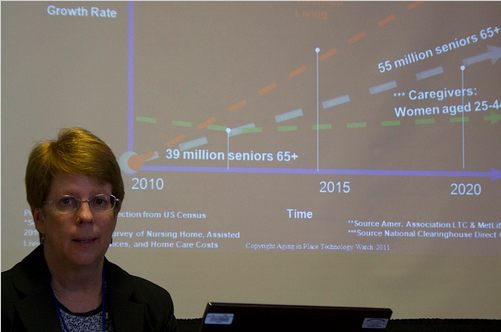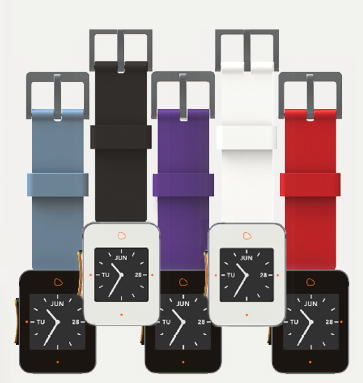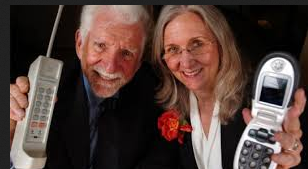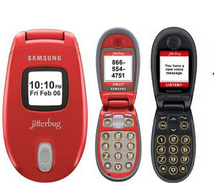Laurie Orlov: Aging at Home Industry Analyst
Laurie M. Orlov, a tech industry veteran, writer, speaker and elder care advocate, spent more than 30 years in the technology industry, including 24 years in IT and 9 years as a leading industry analyst at Forrester Research. In 2008, she added blogging to her list of skills, with Aging in Place Technology Watch and Boomer Health Tech Watch. That Laurie has a desktop folder full of tech products that didn’t succeed, comes as no surprise to her. She lists the main reasons:
- The market was not ready
- The product often was based personal experience without proper market research
Orlov, a straight-shooter says: “one grandmother does not a market research make”
Sometimes the product isn’t a product
She gives, as an example, WellCore (according to the website: no longer available in the U.S). A fall detection system, described as a ‘personal emergency response’
“They thought there was a business in detecting a fall and alerting a responder with a button that activated a call system. But consumers did not recognize that they had this need, the market was as yet undefined, and the product was awkward.”
Success is a solution growing out of another success
- adBrite CEO Iggy Fanlo created MyLively that communicates with a wirelessly connected base station.
- The man behind Meebo, Seth Sternberg, created JoinHonor.com Family-quality care and companionship for the people you love, when you can’t be there
- careangel.com was created by Wolf Shlagman, who had had connections, confidence and a track record creating consult a doctor.
Some products became a success in markets other than intended
Arlene Harris, named top American wireless innovators by Fierce Health, her husband, Martin Cooper, developed and introduced the first handheld cell phone: there was expertise in the industry when creating jitterbugphone
The intention was to make a more beautiful phone – not a phone for seniors. Ironically, it’s a bit of an embarrassment – it’s not necessarily considered positive, succeeding in the seniors market. But it’s become successful through tv and AARP ads, with a celebrity spokesperson
Orlov’s observation is that Apple factor elders into their tablets smart phone but it’s and received infusion of buyers based on grandchildren and grandparents.
Involving seniors in product development
Which brings me to another question: about involving seniors in product development. Seems a no-brainer: involve the end user. But doesn’t happen often. When it does, as AARP did with Georgia Tech and FitBit, users were vocal in their issues:
- couldn’t find directions,
- packaging was too hard to get off
- buttons weren’t big or colourful enough for easy use
- the users abandoned the products because they didn’t seem easy to use or useful
Sometimes products do succeed in spite of the market
- Someone has deep pockets
- Someone on the team has a proven track record
- Someone on the team has enough confidence to make it happen
Orlov’s prediction for the future: Software makes everything adjustable
Special purpose devices are going the way of the dinosaur. We’re going to configure standard devices for personal use. Software makes everything adjustable. Using the car as an example: the seats, the steering wheel, the mirror. In the future, customization will be standard. For example, the Samsung Galaxy, though not for seniors, already has a set series of customization menus called Easy Mode. Eventually, this approach to design could include ‘modes’ for Parkinson’s, Arthritis, Macular Degeneration.
Orlov’s wish for the future integrated solutions
I would like to see small market tech, integrated into solutions, combining personal response systems that will support discharge planning, rehab and homecare. Let’s use tech to help keep people from being re-admitted to hospital.



